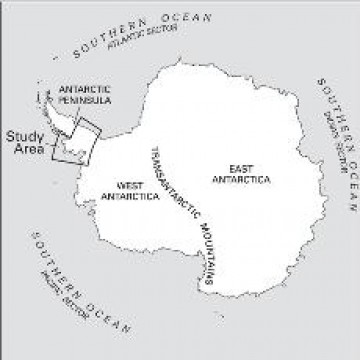Antarctic Melting Due To Global Warming; Sea Levels May Rise
More troubling news from the bottom of the world.
Scientists are studying coastal and glacier change along the entire Antarctic coastline. This map identifies the southern portion of the Antarctic Peninsula, which was the area studied as part of the project.
(U.S. Geological Survey)
The ice shelves in the southern part of the Antarctic Peninsula appear to be disappearing because of climate change, according to a new report from the U.S. Geological Survey and the British Antarctic Survey. "The loss of ice shelves is evidence of the effects of global warming," says USGS scientist and lead author Jane Ferrigno. Melting of the West Antarctic part alone of the Antarctic ice sheet would cause a worldwide sea-level rise of approximately 18 feet. According to the report, "the resulting rise in sea level could severely impact the densely populated coastal regions on Earth." In the worst-case scenario, the potential sea-level rise if the entire Antarctic ice sheet melts is estimated to be 213 to 240 feet. "The changes exhibited in the region are widely regarded as among the most profound and unambiguous examples of the effects of global warming yet seen on the planet," the authors write in the report. Since 1998, the ice lost from just one of the five ice shelves in the study totals more than 1,500 square miles, an area larger than the state of Rhode Island. Scientists used satellite and aerial photographs and maps dating back to the 1940s as sources for the report. The ice shelves are attached to the continent and already floating, holding in place the Antarctic ice sheet that covers about 98 percent of Antarctica. The report acknowledges that while parts of the Antarctic ice sheet are thickening, on balance, it is probably becoming thinner overall. The full report, "Coastal-Change and Glaciological Map of the Palmer Land Area, Antarctica: 1947—2009" is available online. By Doyle Rice

